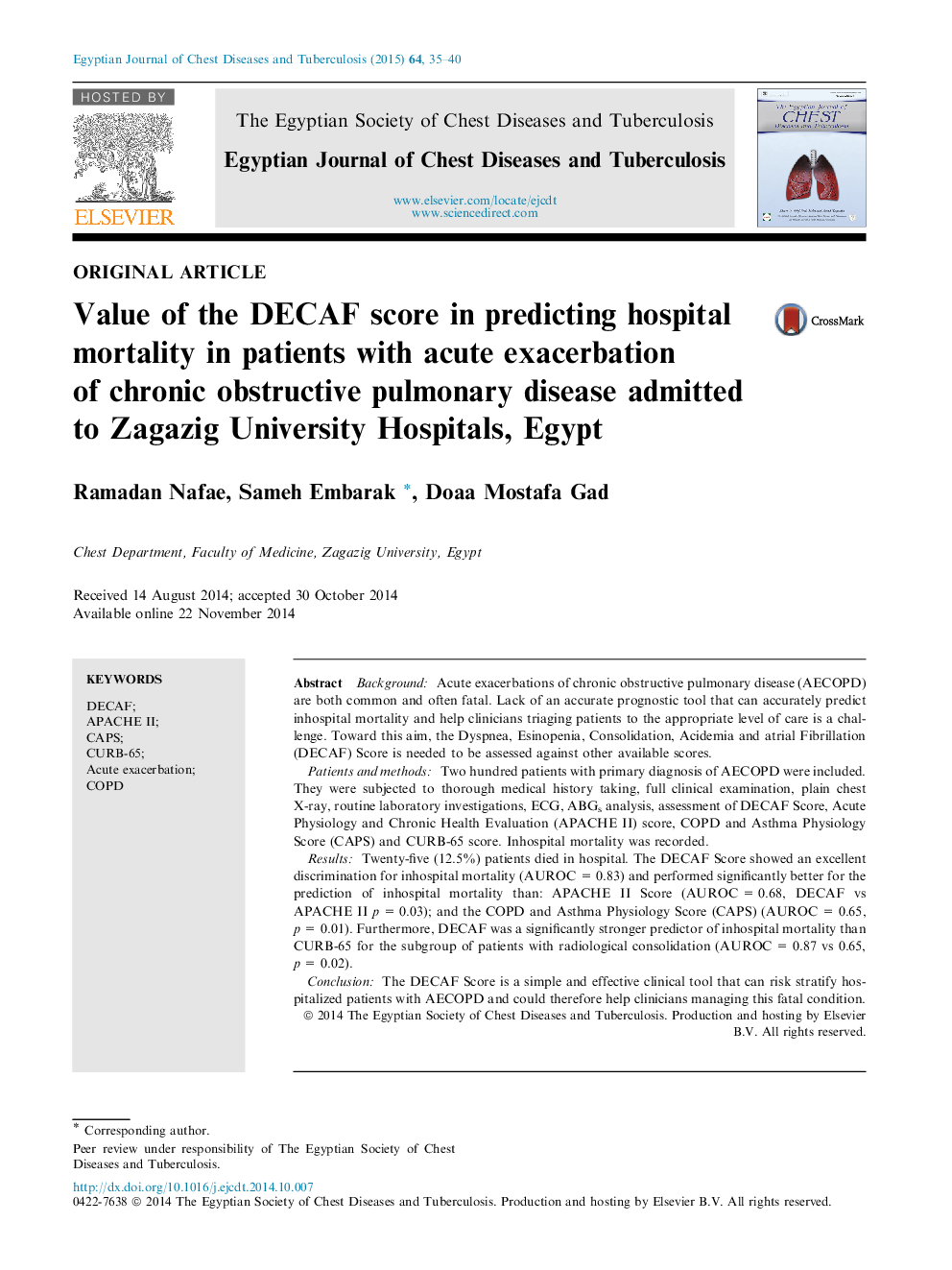| Article ID | Journal | Published Year | Pages | File Type |
|---|---|---|---|---|
| 3400081 | Egyptian Journal of Chest Diseases and Tuberculosis | 2015 | 6 Pages |
BackgroundAcute exacerbations of chronic obstructive pulmonary disease (AECOPD) are both common and often fatal. Lack of an accurate prognostic tool that can accurately predict inhospital mortality and help clinicians triaging patients to the appropriate level of care is a challenge. Toward this aim, the Dyspnea, Esinopenia, Consolidation, Acidemia and atrial Fibrillation (DECAF) Score is needed to be assessed against other available scores.Patients and methodsTwo hundred patients with primary diagnosis of AECOPD were included. They were subjected to thorough medical history taking, full clinical examination, plain chest X-ray, routine laboratory investigations, ECG, ABGs analysis, assessment of DECAF Score, Acute Physiology and Chronic Health Evaluation (APACHE II) score, COPD and Asthma Physiology Score (CAPS) and CURB-65 score. Inhospital mortality was recorded.ResultsTwenty-five (12.5%) patients died in hospital. The DECAF Score showed an excellent discrimination for inhospital mortality (AUROC = 0.83) and performed significantly better for the prediction of inhospital mortality than: APACHE II Score (AUROC = 0.68, DECAF vs APACHE II p = 0.03); and the COPD and Asthma Physiology Score (CAPS) (AUROC = 0.65, p = 0.01). Furthermore, DECAF was a significantly stronger predictor of inhospital mortality than CURB-65 for the subgroup of patients with radiological consolidation (AUROC = 0.87 vs 0.65, p = 0.02).ConclusionThe DECAF Score is a simple and effective clinical tool that can risk stratify hospitalized patients with AECOPD and could therefore help clinicians managing this fatal condition.
